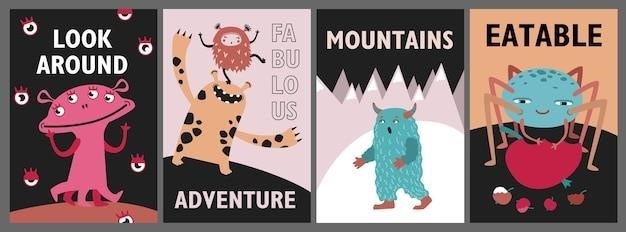Article Plan: The Landlady ⎼ Questions and Answers PDF
This section details a guide to utilizing PDF resources for studying Roald Dahl’s “The Landlady‚” focusing on common questions and analytical approaches for deeper comprehension.

Roald Dahl’s “The Landlady” is a chilling short story renowned for its suspenseful atmosphere and unsettling twist ending. Often studied in middle and high school‚ it presents a deceptively simple narrative that invites close reading and critical analysis. Understanding the story’s nuances requires exploring character motivations‚ thematic elements‚ and Dahl’s masterful use of foreshadowing.
This guide focuses on utilizing “The Landlady” questions and answers PDFs as valuable study aids. These resources offer a structured approach to dissecting the text‚ prompting students to consider key plot points and literary devices. By engaging with thoughtfully crafted questions‚ readers can unlock a deeper appreciation for Dahl’s storytelling prowess and the story’s enduring relevance.
Understanding the Story’s Context

“The Landlady” was published in 1960‚ a period marked by post-war anxieties and a growing sense of unease about societal changes. While not explicitly tied to specific historical events‚ the story taps into a pervasive fear of the unknown and the potential dangers lurking beneath a seemingly idyllic surface. Examining this context enhances comprehension when working through “The Landlady” questions and answers PDFs.
Dahl’s writing style is characterized by dark humor‚ irony‚ and a penchant for the macabre. Recognizing these stylistic elements is crucial for interpreting the story’s subtle clues and appreciating the author’s intent. PDF resources often highlight these aspects‚ guiding students toward a more nuanced understanding of the narrative’s complexities and unsettling tone.
Character Analysis: Billy Weaver
Billy Weaver‚ the story’s protagonist‚ is a young and naive man seeking lodging while on a business trip. Analyzing his character is central to answering many “The Landlady” questions found in study PDFs. His initial politeness and eagerness to please contribute to his vulnerability‚ making him an easy target for manipulation.
PDF resources often prompt analysis of Billy’s decision-making process‚ questioning why he ignores warning signs and readily accepts the landlady’s overly accommodating offer. Understanding his motivations – a desire for comfort and a lack of suspicion – is key to grasping the story’s tragic outcome. Examining his interactions through a critical lens‚ as encouraged by PDF guides‚ reveals his fatal flaw: trusting too easily.
Billy’s Initial Impressions
Billy’s first impressions of the bed and breakfast‚ and particularly the landlady herself‚ are overwhelmingly positive‚ a point frequently explored in “The Landlady” PDF question sets. He perceives a welcoming and cozy atmosphere‚ noting the meticulously maintained appearance and the landlady’s apparent kindness.
PDF study guides often ask students to analyze the significance of these initial impressions‚ highlighting how they contribute to Billy’s sense of security and ultimately‚ his downfall. The landlady’s attentiveness and the seemingly perfect setting lull him into a false sense of safety. Questions within these PDFs challenge readers to identify the subtle clues that foreshadow the sinister truth hidden beneath the surface of this initial charm.
Billy’s Naiveté and Vulnerability

“The Landlady” PDF questions consistently emphasize Billy Weaver’s youth and inexperience as key factors in his tragic fate. He’s portrayed as a trusting and somewhat gullible young man‚ easily swayed by the landlady’s seemingly harmless demeanor. This naiveté makes him particularly vulnerable to her manipulative tactics.
PDF study materials often pose questions about Billy’s decision-making process‚ prompting analysis of why he disregards warning signs and readily accepts the landlady’s hospitality. His vulnerability stems from being alone in a new city and seeking comfort‚ a situation the landlady expertly exploits. Analyzing this aspect is crucial for understanding the story’s cautionary message‚ frequently assessed in PDF quizzes.

Character Analysis: The Landlady
“The Landlady” PDF resources dedicate significant attention to dissecting the enigmatic character of the landlady. Questions frequently explore her motivations and the unsettling contrast between her outward kindness and the sinister undertones present throughout the story. PDF analyses highlight her obsessive nature‚ particularly regarding young men who have stayed at her bed and breakfast.
Study guides often ask students to identify textual evidence supporting interpretations of her true nature‚ moving beyond the initial impression of a harmless‚ elderly woman. PDF materials emphasize the importance of recognizing foreshadowing and subtle clues that hint at her dark secret‚ prompting critical thinking about her role in the narrative’s suspense.
The Landlady’s Seeming Kindness
“The Landlady” PDF study guides consistently address the landlady’s initially presented kindness as a crucial element of Dahl’s storytelling. Questions often focus on how she cultivates an atmosphere of warmth and hospitality‚ offering Billy tea‚ a comfortable room‚ and seemingly genuine concern for his well-being.
PDF analyses explore how this façade of kindness serves to disarm Billy‚ making him more vulnerable to her manipulative intentions. Resources prompt students to analyze specific textual details – her overly attentive behavior‚ the meticulously maintained house‚ and the stuffed animals – to understand how Dahl establishes this deceptive persona. The PDFs emphasize that this kindness is too perfect‚ raising red flags for astute readers.
The Landlady’s True Nature – Hints and Foreshadowing
“The Landlady” PDF resources heavily emphasize the subtle foreshadowing of the landlady’s sinister nature. Questions frequently ask students to identify clues that hint at her disturbing past and present intentions‚ moving beyond her initial kindness.

PDF analyses pinpoint details like the preserved appearances of previous guests – the stuffed animals representing former boarders – as critical foreshadowing elements. Resources prompt examination of her obsessive record-keeping and unusual questions about Billy’s life. These PDFs highlight Dahl’s masterful use of dramatic irony‚ where the reader suspects the truth long before Billy does. Identifying these hints is key to understanding the story’s chilling climax.
Key Themes in “The Landlady”
“The Landlady” PDF study guides consistently focus on core themes like the dangers of misplaced trust and the deceptive nature of appearances. Questions within these PDFs often ask students to analyze how Billy’s naiveté contributes to his vulnerability‚ and how the landlady expertly exploits this.
Resources emphasize the contrast between the cozy‚ welcoming facade of the bed and breakfast and the sinister reality lurking beneath. PDFs prompt exploration of how Dahl uses setting and characterization to illustrate the theme of appearance versus reality. Analyzing these themes through PDF-provided questions fosters a deeper understanding of the story’s cautionary message.

The Dangers of Trusting Strangers

“The Landlady” PDF question sets heavily emphasize the perils of trusting unfamiliar individuals‚ particularly when presented with a seemingly harmless exterior. Questions frequently ask students to pinpoint moments where Billy disregards warning signs‚ blinded by politeness and a need for accommodation.
PDFs often include prompts analyzing the landlady’s manipulative tactics and how she preys on Billy’s vulnerability as a young‚ alone traveler. Resources encourage students to consider the story as a cautionary tale‚ prompting discussion on the importance of skepticism and self-preservation when encountering strangers. Analyzing these questions builds critical thinking skills.
Appearance vs. Reality
“The Landlady” PDF study guides consistently explore the stark contrast between how things seem and what they truly are‚ a central theme in Dahl’s work. Questions challenge students to identify instances where the landlady’s charming facade masks a sinister intent‚ prompting close reading of descriptive passages.
PDF resources often ask students to analyze the symbolism of the house itself – outwardly welcoming‚ yet harboring dark secrets. They encourage examination of how Billy’s initial positive impressions are gradually undermined by unsettling details. Analyzing these discrepancies fosters a deeper understanding of Dahl’s masterful use of dramatic irony and suspense.
Symbolism in the Story
“The Landlady” PDF study guides heavily emphasize the story’s rich symbolism‚ prompting analysis of key elements beyond their literal meaning. Questions frequently focus on the unsettling collection of stuffed animals‚ representing the landlady’s preserved “guests” and her controlling nature.
PDF resources also explore the symbolic weight of the tea offered to Billy‚ often interpreted as a means of control or even a symbolic poisoning. Students are asked to consider how these symbols contribute to the story’s overall atmosphere of dread and foreshadowing. Analyzing these elements unlocks a deeper understanding of Dahl’s thematic concerns.
The Stuffed Animals and Their Significance
“The Landlady” PDF question sets consistently probe the meaning behind the numerous stuffed animals‚ prompting students to decipher their unsettling presence. These aren’t innocent decorations; PDFs highlight their connection to the landlady’s previous lodgers‚ effectively preserved as trophies.
Analysis questions often ask how the animals symbolize lost youth and vitality‚ mirroring Billy’s own vulnerability. PDFs encourage students to consider the landlady’s obsessive taxidermy as a metaphor for her desire to possess and control. Understanding this symbolism is crucial for interpreting the story’s dark undertones and the landlady’s true intentions.
The Tea and its Symbolic Weight
“The Landlady” PDF study guides frequently address the significance of the tea offered to Billy‚ framing it as more than just a gesture of hospitality. Questions explore how the tea represents a subtle form of entrapment and control exerted by the landlady.
PDFs emphasize the tea’s potential as a sedative or poison‚ fueling the story’s suspense. Analytical prompts ask students to consider the landlady’s meticulous preparation and insistence on Billy finishing every drop. This detail‚ often highlighted in question sets‚ symbolizes the landlady’s complete domination and foreshadows Billy’s fate‚ making the tea a potent symbol of danger.
Plot Points and Critical Moments
“The Landlady” PDF resources dedicate significant attention to key plot points‚ often posing questions about their impact on the narrative’s suspense. Critical moments‚ like Billy’s arrival at the bed and breakfast‚ are analyzed for initial foreshadowing and character introductions.
PDFs frequently include questions regarding the landlady’s unusually intense interest in Billy‚ prompting students to identify subtle clues hinting at her true nature. Discussions center on the mounting tension as Billy learns about the previous young men who stayed there. Analyzing these pivotal scenes‚ as guided by PDF study materials‚ reveals Dahl’s masterful use of suspense and dramatic irony.
Billy’s Arrival at the Bed and Breakfast
“The Landlady” PDF question sets often begin with Billy’s arrival‚ probing his initial impressions and the immediate atmosphere of the bed and breakfast. Questions explore why Billy chooses this particular lodging‚ focusing on his desperation and the enticing advertisement.
PDFs analyze the landlady’s welcoming demeanor‚ asking students to consider if it seems genuine or overly enthusiastic. Discussions center on the details of the room and the landlady’s eagerness to please‚ prompting analysis of potential red flags. These resources guide students to recognize the subtle foreshadowing present from the very beginning of Billy’s stay.
The Landlady’s Unusual Interest in Billy
“The Landlady” PDF study guides frequently focus on the landlady’s peculiar fascination with Billy‚ posing questions about her excessive attention and detailed inquiries. These resources ask students to identify specific instances of her behavior that seem unsettling or inappropriate‚ like remembering past guests with unnerving accuracy.
PDFs explore the significance of her record-keeping‚ prompting analysis of why she meticulously notes down every detail about her visitors. Questions delve into her attempts to cater specifically to Billy’s preferences‚ examining if this is kindness or something more sinister. Analyzing this interest is crucial for understanding the story’s suspense.
Common Questions About “The Landlady” ⎼ PDF Focus
“The Landlady” questions and answers PDFs commonly center on character motivations and plot interpretation. Students are often asked to analyze Billy’s naiveté and the landlady’s deceptive nature‚ exploring why Billy doesn’t recognize the danger. PDFs frequently pose questions about the significance of the stuffed animals and the tea‚ prompting symbolic analysis.

Another frequent focus is identifying foreshadowing‚ with PDFs asking students to pinpoint clues hinting at the landlady’s true intentions. Questions also address the story’s themes – trust‚ appearance versus reality‚ and the dangers of strangers – requiring textual evidence. These PDFs aim to build critical thinking skills.

Finding and Utilizing “The Landlady” Questions and Answers PDFs
Locating “The Landlady” study guides is readily achievable through online searches. Educational websites‚ literature resource platforms‚ and even school-specific learning portals often host these PDFs. When selecting a PDF‚ prioritize those aligned with your curriculum or study goals.
Effective utilization involves active reading and annotation. Don’t simply read the answers; attempt the questions independently first. Compare your responses to the provided solutions‚ identifying areas for improvement. Utilize the PDFs for practice‚ reinforcing comprehension and analytical skills. Remember to cross-reference with the original text for deeper understanding.
Analyzing Sample Questions from PDFs
PDF question sets frequently probe character motivations‚ such as exploring why Billy chooses the boarding house or the Landlady’s peculiar behavior. Expect questions demanding textual evidence to support interpretations. Plot development questions often focus on key moments – Billy’s arrival‚ the tea service‚ or the stuffed pets – and their significance.
Effective analysis requires close reading and critical thinking. Don’t accept surface-level answers; delve into the underlying themes and symbolism. Consider how Dahl uses foreshadowing and irony. Practice articulating your responses clearly and concisely‚ demonstrating a thorough understanding of the story’s nuances.
Questions on Character Motivation
PDFs often ask: “Why does Billy choose to stay at the Landlady’s?” This prompts analysis of his naiveté and desperation for affordable lodging. Another common question explores the Landlady’s excessive kindness – is it genuine‚ or does it mask sinister intentions? Examining her detailed record-keeping of past guests is crucial.
Consider Billy’s limited experience and trusting nature. Why doesn’t he question the unusually low price or the Landlady’s intense interest? Analyzing these choices reveals his vulnerability. Understanding the Landlady’s motivation requires identifying clues about her past and the fate of previous boarders‚ prompting speculation about her true character.
Questions on Plot Development
PDF study guides frequently focus on pivotal moments. “How does the setting contribute to the story’s suspense?” is a common query‚ highlighting the isolated location and claustrophobic atmosphere. Another asks about the significance of the tea – what role does it play in the unfolding events? Analyzing Billy’s arrival and initial interactions with the Landlady is key.
Consider the escalating tension as Billy learns more about the house and its owner. Why does the Landlady’s detailed guest book feel unsettling? PDFs often ask students to trace the foreshadowing clues that hint at a darker truth‚ prompting a close reading of Dahl’s descriptive language and character interactions.
Resources for Further Study
Beyond PDF question sets‚ several resources enhance understanding. SparkNotes and CliffNotes offer comprehensive analyses of “The Landlady‚” providing plot summaries‚ character breakdowns‚ and thematic explorations. Online literary journals often feature critical essays dissecting Dahl’s style and intent.
For visual learners‚ film adaptations or stage productions can offer new perspectives. Websites dedicated to Roald Dahl’s work provide biographical information and contextual details about his writing career. Utilizing academic databases like JSTOR can uncover scholarly articles examining the story’s symbolism and psychological elements‚ enriching your analysis.
“The Landlady” continues to resonate with readers due to its chilling exploration of deceptively harmless appearances. The story’s compact format makes it ideal for classroom analysis‚ prompting discussions about trust‚ vulnerability‚ and the dangers lurking beneath polite facades.
PDFs containing questions and answers serve as valuable tools for assessing comprehension and encouraging critical thinking. Its themes remain strikingly relevant in a world where online interactions and unfamiliar encounters are commonplace. Dahl’s masterful use of foreshadowing and suspense ensures “The Landlady” will captivate and unsettle audiences for generations to come.



